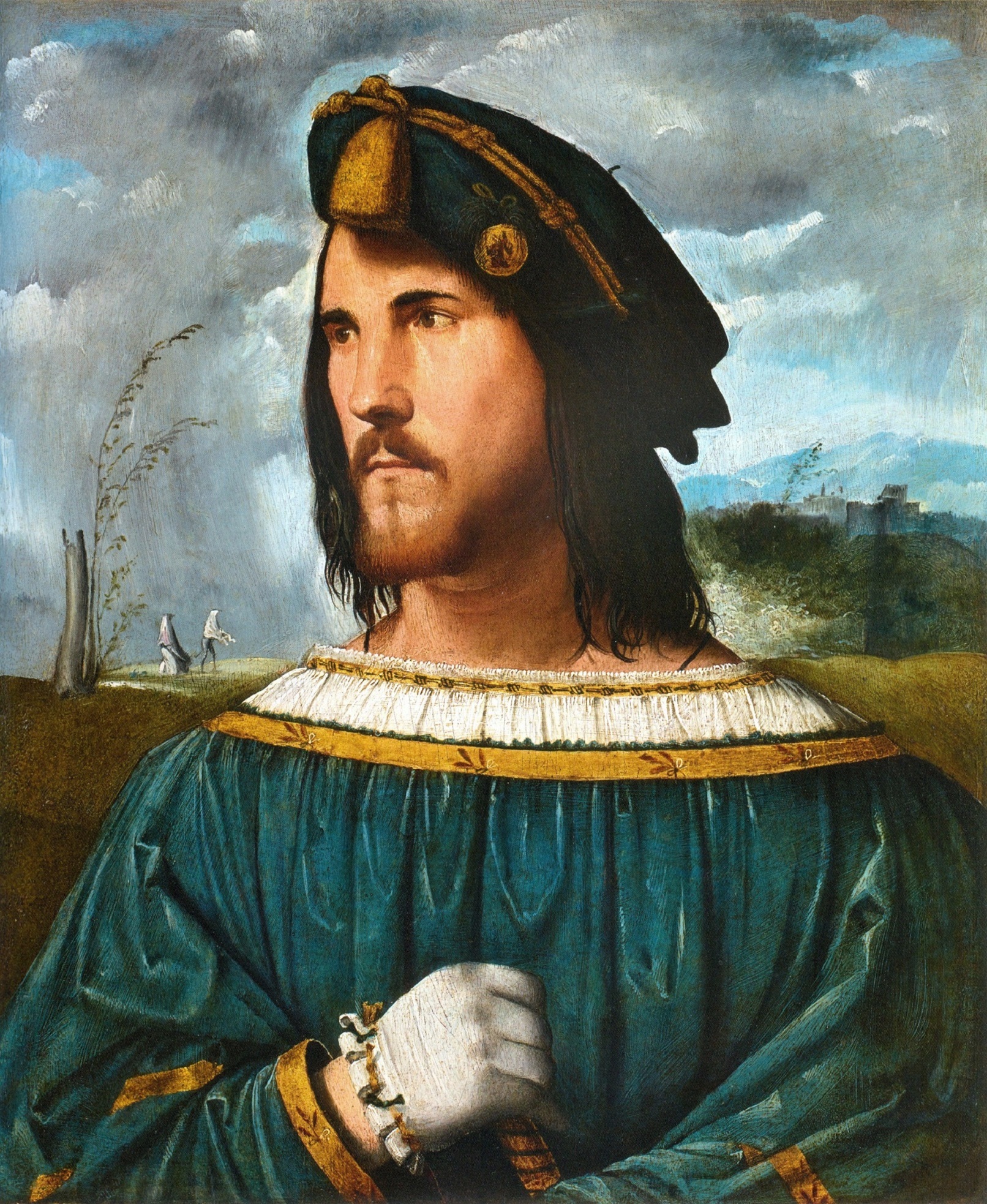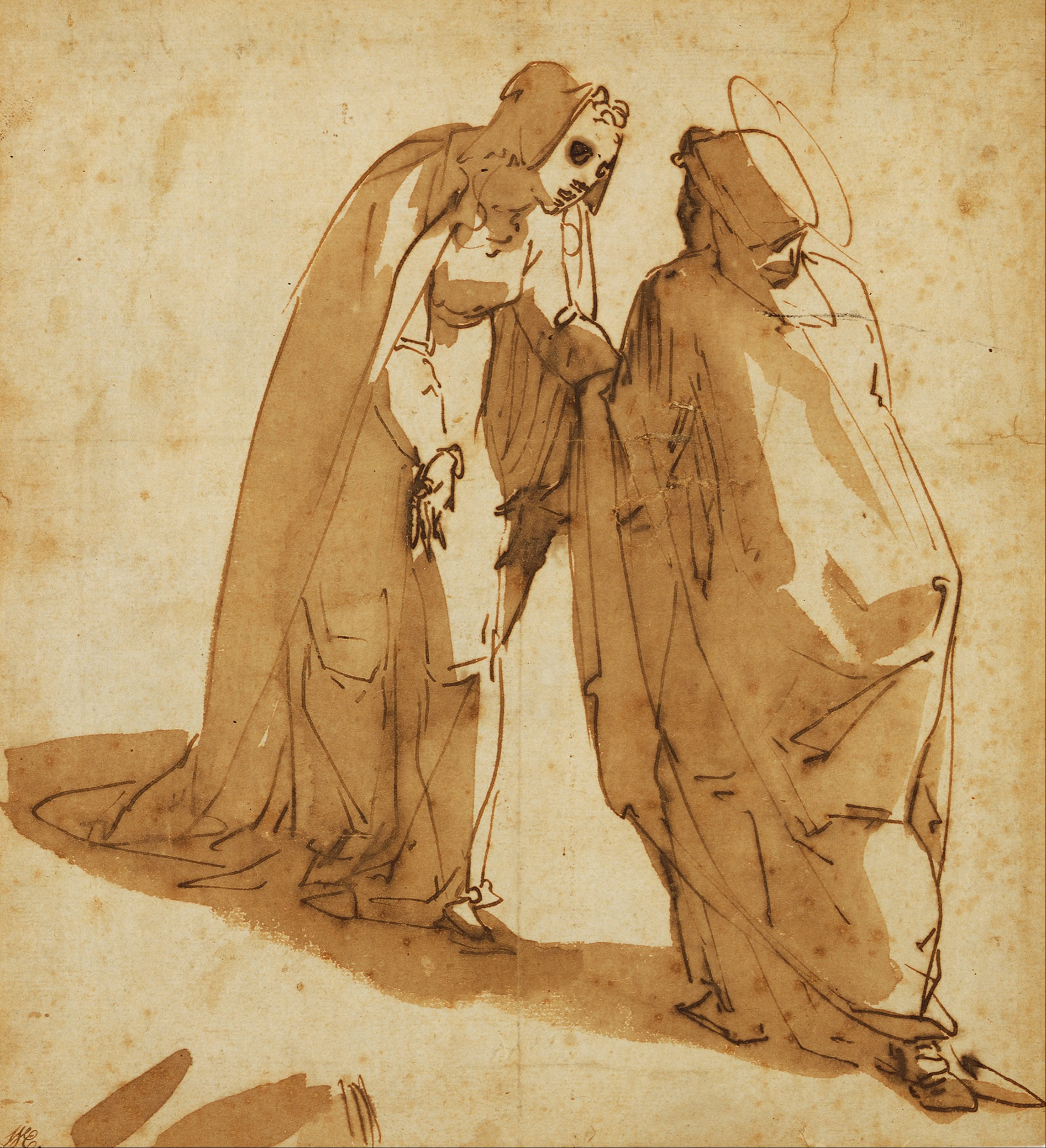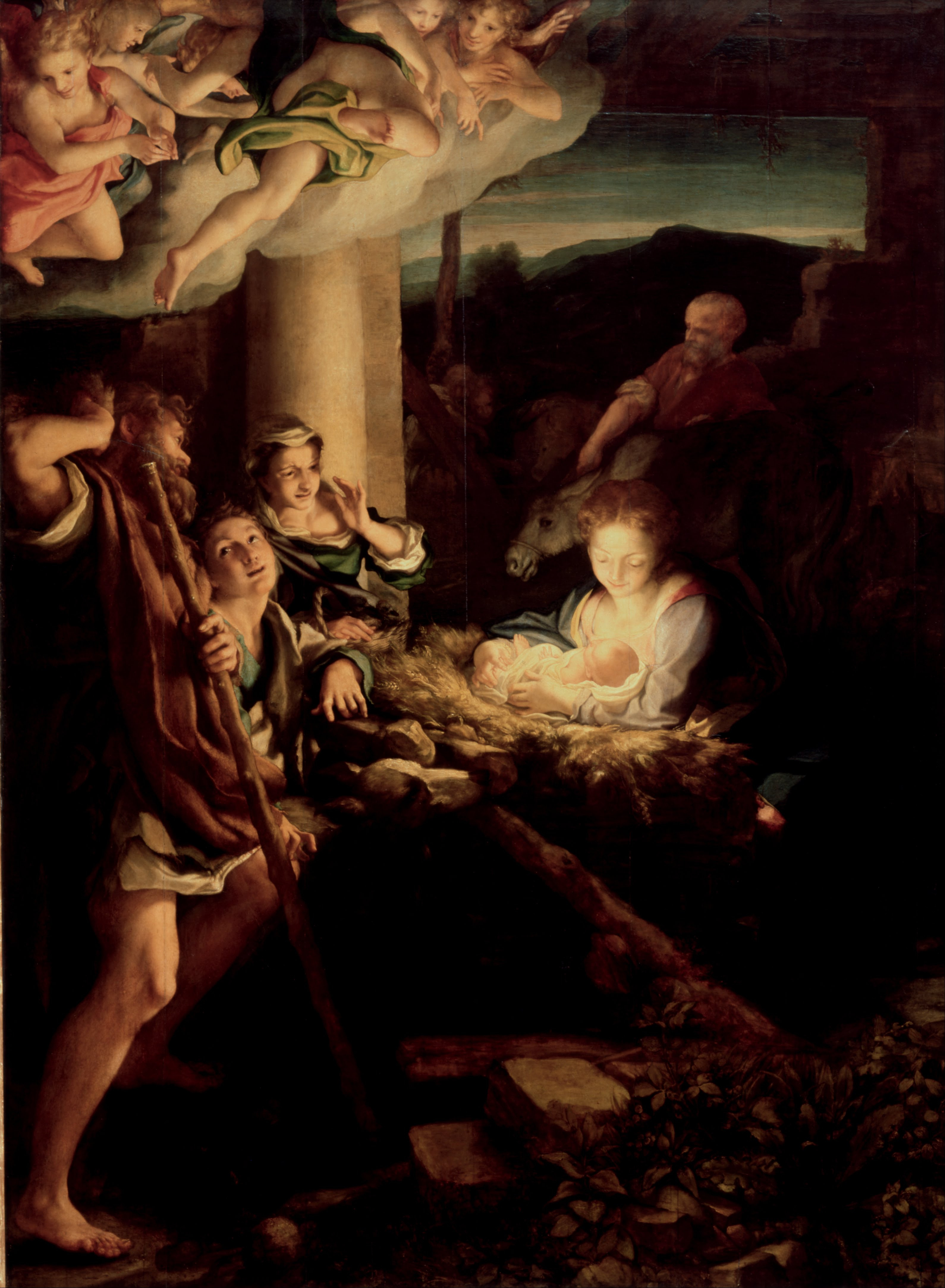|
Girolamo Romanino
Girolamo Romani, known as Romanino (c. 1485 - c. 1566), was an Italian High Renaissance painter active in the Veneto and Lombardy, near Brescia. His long career brought forth several different styles. Biography Romani was born in Brescia. His early training and life are not well documented. A Quattrocento-esque ''Pietà'', painted for the church of ''San Lorenzo'' of Brescia, dated from 1510, is exhibited in the Accademia. He took up residence in Venice in his twenties, at the latest by 1513. He was commissioned to complete a ''Madonna enthroned with four saints'' for the church of Santa Giustina in Padua in 1513. The coloration of the painting is of Venetian style, but the duller visages in bejeweled setting recalls styles of previous generations. He completed series of frescoes for Niccolò Orsini's Palace in Ghedi and an altarpiece for San Francesco, Brescia. Romanino completed four frescoes in the nave of the cathedral of Cremona in 1519-1520 depicting stories ... [...More Info...] [...Related Items...] OR: [Wikipedia] [Google] [Baidu] |
Lattanzio Gambara
Lattanzio Gambara (c. 1530 – 18 March 1574) was an Italian painter, active in Renaissance and Mannerist styles. It is likely that Gambara is the same 16th century painter referred to as ''Lattanzio Cremonese'' or ''Lattanzio da Cremona''. Biography Born in Brescia, Gambara initially apprenticed, aged fifteen, with Giulio Campi in Cremona. By 1549 he was working alongside Girolamo Romanino, who became his father-in-law. Gambara's work also shows the influence of il Pordenone. An altarpiece of S. Maria in Silva dates to 1558. He painted frescoes in the Villa Contarini in Asolo. Another fresco cycle on the ''History of the Apocalypse'' decorated the Loggia of Brescia, until it was destroyed by bombing in 1944. In his maturity the artist returned to Brescia to work with Romanino in a series of generally lost frescoes for Sant'Eufemia and Saint Lorenzo in Brescia. He painted altarpieces, all but one of them now lost, for the abbey of Saint Benedict in Polirone, and also decorated ... [...More Info...] [...Related Items...] OR: [Wikipedia] [Google] [Baidu] |
Altobello Melone
Altobello Melone ( 1490–1491 – before 3 May 1543) was an Italian painter of the Renaissance. Biography Melone was born in Cremona. His work merges Lombard and Mannerist styles. In Cremona, he encountered the elder Girolamo Romanino. He was commissioned in December 1516 to fresco the Cathedral of Cremona, work which continued until 1518. His contract required that his frescoes be more beautiful than those of his predecessor, Boccaccio Boccaccino. He worked alongside Giovanni Francesco Bembo and Paolo da Drizzona. Francesco Prata was influenced by Melone. Melone contributed frescoes to the Cathedral of Cremona in 1516. The ''Lamentation'' in the Pinacoteca di Brera comes in all probability from the church of Saint Lorenzo in Brescia and is dated 1512. The stylistic convergence with Romanino is particularly obvious, such that the contemporary Venetian Marcantonio Michiel describes the Cremonese painter as a "disciple of Armanin". Moreover, in his masterpiece frescoes, M ... [...More Info...] [...Related Items...] OR: [Wikipedia] [Google] [Baidu] |
Asola, Lombardy
Asola ( Upper Mantovano: ) is a comune in the province of Mantua, Lombardy (northern Italy). It received the honorary title of city with a presidential decree of October 23, 1951. In 1516, when it was part of the Republic of Venice, it was unsuccessfully besieged by the troops of the Austrian Maximilian I. The event is portrayed in a painting by Tintoretto Tintoretto ( , , ; born Jacopo Robusti; late September or early October 1518Bernari and de Vecchi 1970, p. 83.31 May 1594) was an Italian painter identified with the Venetian school. His contemporaries both admired and criticized the speed wit ..., '' The Siege of Asola''. The local civic museum is titled Museo Civico Goffredo Bellini. Twin towns * Leingarten, Germany, since 2004 * Lésigny, France, since 2004 Cities and towns in Lombardy {{Mantua-geo-stub ... [...More Info...] [...Related Items...] OR: [Wikipedia] [Google] [Baidu] |
Trento
Trento ( or ; Ladin and lmo, Trent; german: Trient ; cim, Tria; , ), also anglicized as Trent, is a city on the Adige River in Trentino-Alto Adige/Südtirol in Italy. It is the capital of the autonomous province of Trento. In the 16th century, the city was the location of the Council of Trent. Formerly part of Austria and Austria-Hungary, it was annexed by Italy in 1919. With 118,142 inhabitants, Trento is the third largest city in the Alps and second largest in the historical region of Tyrol. Trento is an educational, scientific, financial and political centre in Trentino-Alto Adige/Südtirol, in Tyrol and Northern Italy in general. The city contains a picturesque Medieval and Renaissance historic centre, with ancient buildings such as Trento Cathedral and the Castello del Buonconsiglio. Together with other Alpine towns Trento engages in the Alpine Town of the Year Association for the implementation of the Alpine Convention to achieve sustainable development in the ... [...More Info...] [...Related Items...] OR: [Wikipedia] [Google] [Baidu] |
Castel Buonconsiglio
Buonconsiglio Castle ( it, Castello del Buonconsiglio) is a castle in Trento, northern Italy. History The castle originated from a fortified building that was erected in the 13th century next to the city's walls. This first building was called Castelvecchio ("Old Castle"), and was the seat of the Bishopric of Trent from the 13th century onwards to the end of the 18th century. The castle is composed of a series of buildings of different eras, enclosed by a circle of walls in a slightly elevated position above the town. The, as called, Castelvecchio is the oldest and most dominant building of the entire housing development. The Magno Palazzo is the sixteenth expansion in the forms of the Italian Renaissance, wanted by the Prince Bishop and Cardinal Bernardo Clesio (1485-1539), the third part, in the southern end of the complex is the known Eagle tower, which preserves the famous Cycle of the Months, one of the most fascinating pictorial cycles of profane late Middle Ages. Bisho ... [...More Info...] [...Related Items...] OR: [Wikipedia] [Google] [Baidu] |
Dosso Dossi
Giovanni di Niccolò de Luteri, better known as Dosso Dossi ( 1489–1542), was an Italian Renaissance painter who belonged to the School of Ferrara, painting in a style mainly influenced by Venetian painting, in particular Giorgione and early Titian. From 1514 to his death he was court artist to the Este Dukes of Ferrara and of Modena, whose small court valued its reputation as an artistic centre. He often worked with his younger brother Battista Dossi, who had worked under Raphael. He painted many mythological subjects and allegories with a rather dream-like atmospheres, and often striking disharmonies in colour. His portraits also often show rather unusual poses or expressions for works originating in a court. Biography Dossi was born in San Giovanni del Dosso, a village in the province of Mantua. His early training and life are not well documented; his father, originally of Trento, was a bursar (''spenditore'' or ''fattore'') for the Dukes of Ferrara. He may have had train ... [...More Info...] [...Related Items...] OR: [Wikipedia] [Google] [Baidu] |
Bartolomeo Colleoni
Bartolomeo Colleoni (; 1400 – 2 November 1475) was an Italian condottiero, who became captain-general of the Republic of Venice. Colleoni "gained reputation as the foremost tactician and disciplinarian of the 15th century".''Websters New Biographical Dictionary'' 1983 Springfield, Massachusetts: Merriam-Webster, Inc., p. 223 He is also credited with having refurbished the Roman baths at Trescore Balneario. Biography Background Colleoni was born in Solza near Bergamo, which was then part of the Duchy of Milan. In Bergamo Colleoni later bult himself a mortuary chapel, the ''Cappella Colleoni''. The Colleoni family was noble, but had been exiled with the rest of the Guelphs by the Visconti of Milan. Bartolomeo's father Paolo Colleoni had seized the castle of Trezzo, until he was assassinated by his cousins, probably acting on the orders of Filippo Maria Visconti, Duke of Milan. Career The young Colleoni trained as a soldier, first in the retinue of Filippo d'Ar ... [...More Info...] [...Related Items...] OR: [Wikipedia] [Google] [Baidu] |
Bergamo
Bergamo (; lmo, Bèrghem ; from the proto- Germanic elements *''berg +*heim'', the "mountain home") is a city in the alpine Lombardy region of northern Italy, approximately northeast of Milan, and about from Switzerland, the alpine lakes Como and Iseo and 70 km (43 mi) from Garda and Maggiore. The Bergamo Alps (''Alpi Orobie'') begin immediately north of the city. With a population of around 120,000, Bergamo is the fourth-largest city in Lombardy. Bergamo is the seat of the Province of Bergamo, which counts over 1,103,000 residents (2020). The metropolitan area of Bergamo extends beyond the administrative city limits, spanning over a densely urbanized area with slightly less than 500,000 inhabitants. The Bergamo metropolitan area is itself part of the broader Milan metropolitan area, home to over 8 million people. The city of Bergamo is composed of an old walled core, known as ''Città Alta'' ("Upper Town"), nestled within a system of hills, and the modern ... [...More Info...] [...Related Items...] OR: [Wikipedia] [Google] [Baidu] |
Castle Of Malpaga
The Malpaga Castle (Italian: ''Castello di Malpaga'') is a castle in the communal territory of Cavernago, a village in the province of Bergamo, northern Italy. Its main features are the interior rooms frescoed by the Renaissance painter Il Romanino. An early medieval castle had been in ruins after a raid in the 1440s. In 1456, the condottiero and nobleman Bartolomeo Colleoni acquired the ruined castle from the commune of Bergamo. He enlarged and enriched it not only as a military base for his troops, but also as a seigneurial residence, in the typical Italian Renaissance fashion. The castle layout is square, surrounded by two lines of walls and a ditch. The first line, now disappeared, included the stables and the barracks. The walls are characterized by merlons. The castle's internal walls are almost entirely frescoed, although some of them have deteriorated or been vandalized. Some frescoes celebrate the 1474 visit of King Christian I of Denmark and the sumptuous hospitality g ... [...More Info...] [...Related Items...] OR: [Wikipedia] [Google] [Baidu] |
Palazzo Averoldi
A palace is a grand residence, especially a royal residence, or the home of a head of state A head of state (or chief of state) is the public persona who officially embodies a state (polity), state#Foakes, Foakes, pp. 110–11 "[The head of state] being an embodiment of the State itself or representatitve of its international p ... or some other high-ranking dignitary, such as a bishop or archbishop. The word is derived from the Latin name palātium, for Palatine Hill in Rome which housed the Roman Empire, Imperial residences. Most European languages have a version of the term (''palais'', ''palazzo'', ''palacio'', etc.), and many use it for a wider range of buildings than English. In many parts of Europe, the equivalent term is also applied to large private houses in cities, especially of the aristocracy; often the term for a large country house is different. Many historic palaces are now put to other uses such as parliaments, museums, hotels, or office buildings. The ... [...More Info...] [...Related Items...] OR: [Wikipedia] [Google] [Baidu] |
Luca Cambiaso
Luca Cambiaso (also known as Luca Cambiasi and Luca Cangiagio (being ''Cangiaxo'' the surname in Ligurian); 18 November 1527 – 6 September 1585) was an Italian painter and draughtsman and the leading artist in Genoa in the 16th century. He is considered the founder of the Genoese school who established the local tradition of historical fresco painting through his many decorations of Genoese churches and palaces. He produced a number of poetic night scenes. He was a prolific draughtsman who sometimes reduced figures to geometric (even cubic) forms.Lauro Magnani. "Cambiaso, Luca." Grove Art Online. Oxford Art Online. Oxford University Press. Web. 14 Mar. 2016 He was familiarly known as Lucchetto da Genova. Life Cambiaso was born in Moneglia, then part of the Republic of Genoa, the son of a painter named Giovanni Cambiaso. Cambiaso was precocious, and at the age of fifteen he painted, along with his father, some subjects from Ovid's ''Metamorphoses'' on the facade of a house ... [...More Info...] [...Related Items...] OR: [Wikipedia] [Google] [Baidu] |
Antonio Da Correggio
Antonio Allegri da Correggio (August 1489 – 5 March 1534), usually known as just Correggio (, also , , ), was the foremost painter of the Parma school of the High Italian Renaissance, who was responsible for some of the most vigorous and sensuous works of the sixteenth century. In his use of dynamic composition, illusionistic perspective and dramatic foreshortening, Correggio prefigured the Baroque art of the seventeenth century and the Rococo art of the eighteenth century. He is considered a master of chiaroscuro. Early life Antonio Allegri was born in Correggio, a small town near Reggio Emilia. His date of birth is uncertain (around 1489). His father was a merchant. Otherwise little is known about Correggio's early life or training. It is, however, often assumed that he had his first artistic education from his father's brother, the painter Lorenzo Allegri. In 1503–1505, he was apprenticed to Francesco Bianchi Ferrara in Modena, where he probably became familiar with th ... [...More Info...] [...Related Items...] OR: [Wikipedia] [Google] [Baidu] |
.jpg)








